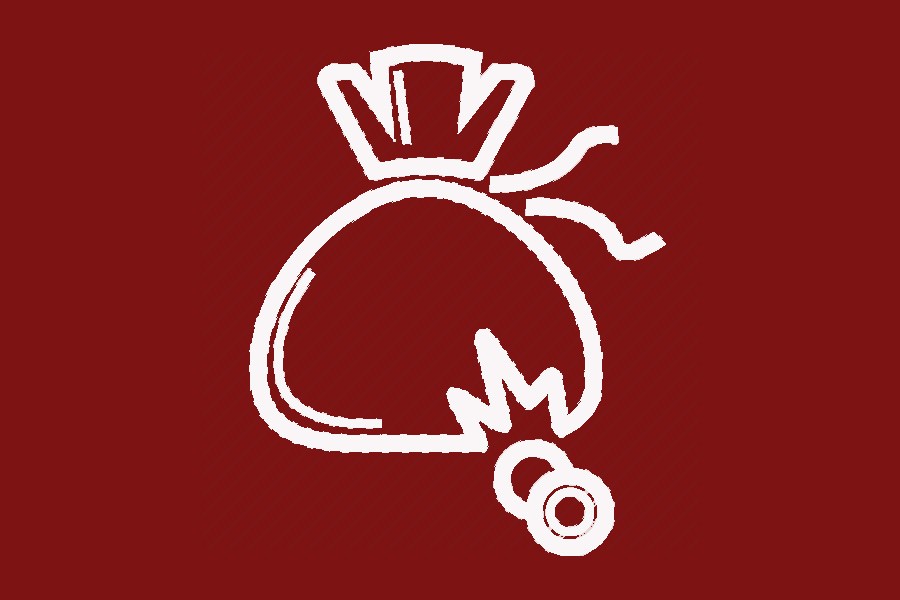We all know what poverty looks like. Born in a country that proudly claimed the lower middle income status three years ago, we might believe that we know poverty inside out. But it would not be wise to assume so. In reality, poverty is multidimensional, which means, we all have our own versions of understanding the phenomenon.
My image of poverty was of a barren land with no electricity or roads and small houses dispersed across an impoverished community. Instead, I found a metalled road with tin roofed houses gleaming on both sides and occasional motor bikes and vans carrying well-dressed people. The sign of economic well-being was visible in that village. And right in the middle, surrounded by prosperous families, lived Maya Rani Das.
Maya lived in a house made of clay. The only other visible structure on her yard was a small stove made of clay. She did not own any furniture, not even a bed. She had two children and neither of them, including the mother, had another set of clothes apart from the ones they were wearing. They lived off with the generosity of someone else's land, and used their community's latrine and tube well for water. They had their last meal in the morning with rice and fried onions borrowed from their neighbours. It was a lean season, so Maya could not find any work. She hoped her husband will, or else they would have nothing to eat for the rest of the day.
Many people define families like Maya's as an 'ultra poor' household. They belong to the lowest subset of the extreme poor who live on less than US$ 1.90 a day, while many others living in remote villages almost disconnected from markets, find themselves in 'pockets' of poverty, similar to Maya. Their destitution is not only on the extent of education, better healthcare or access to finance, but they are also excluded from all social interactions. Outcast and forgotten, they slowly fail to recognise themselves as equals to human beings.
Most of the ultra poor cannot remember their family history. A study in this context suggests that people living in poverty spend most of their mental energy worrying about their next meal, hence they have little time to think about the past or deal with bigger issues like family planning, education or parenting. Only a few remember their parents owning livestock or agricultural lands that disappeared into the river. Some families were crushed by the death of their only earning members. Many parents abandoned their children because of their inability to feed them. Their own story was a repetition of their parents'. As if they are carrying the same baton of poverty from generation to generation.
Today, almost 10.7 per cent of the world's population lives below the extreme poverty line. In Bangladesh, the approximate number is 4.6 million households. In an age of innovation and discoveries, the value of development will be meaningless if we cannot deliver its benefits to everyone.
There are initiatives aimed at improving the livelihoods of people living in poverty in Bangladesh. Unfortunately, people living at the bottom of the social pyramid are often unable to access government social safety net programmes. Moreover, these programmes are generally designed to ensure greater access to social services like education and healthcare and only offer a short term solution with less prospect of sustainability. For many years, we were trying to develop a sustainable strategy to tackle extreme poverty.
We might have the solution now in a carefully sequenced set of services known as the "Graduation Approach". The beauty of the model is that it takes a holistic view to tackle extreme poverty. Using an inerrant method to select ultra poor households, the approach utilises a comprehensive package of interventions to enable the ultra poor households to "graduate" to ride on an economic ladder, while injecting the right skills and resources, to lift themselves out of poverty. Pioneered by BRAC in 2002, the approach has been able to reach 1.9 million ultra poor households in Bangladesh. So far, the model has achieved worldwide recognition and has been replicated and adapted by stakeholders in the poorest regions of the world.
Setting aside all technicalities, the biggest difference between other livelihood development programmes or lump sum cash transfers is that graduation recognises each person born with dignity, and poverty is only a context. With the support of the right tools and assistance, ultra poor households have the ability to transform their lives all by themselves. Graduation instils confidence and resilience, rather than dependency, and makes a lasting impact on the lives of the participants and their future generations.
October 17 marked the 30th anniversary of the Call to Action which claimed UN recognition as the International Day for Eradication of Poverty. The day inspires us to believe that we can all witness a world free from poverty in our lifetime, if we come forward and embrace the ones living in poverty, and stand in solidarity with them for an inclusive world.
The writer is working as an external communications specialist for BRAC's microfinance and targeting ultra poor (TUP) programme.


